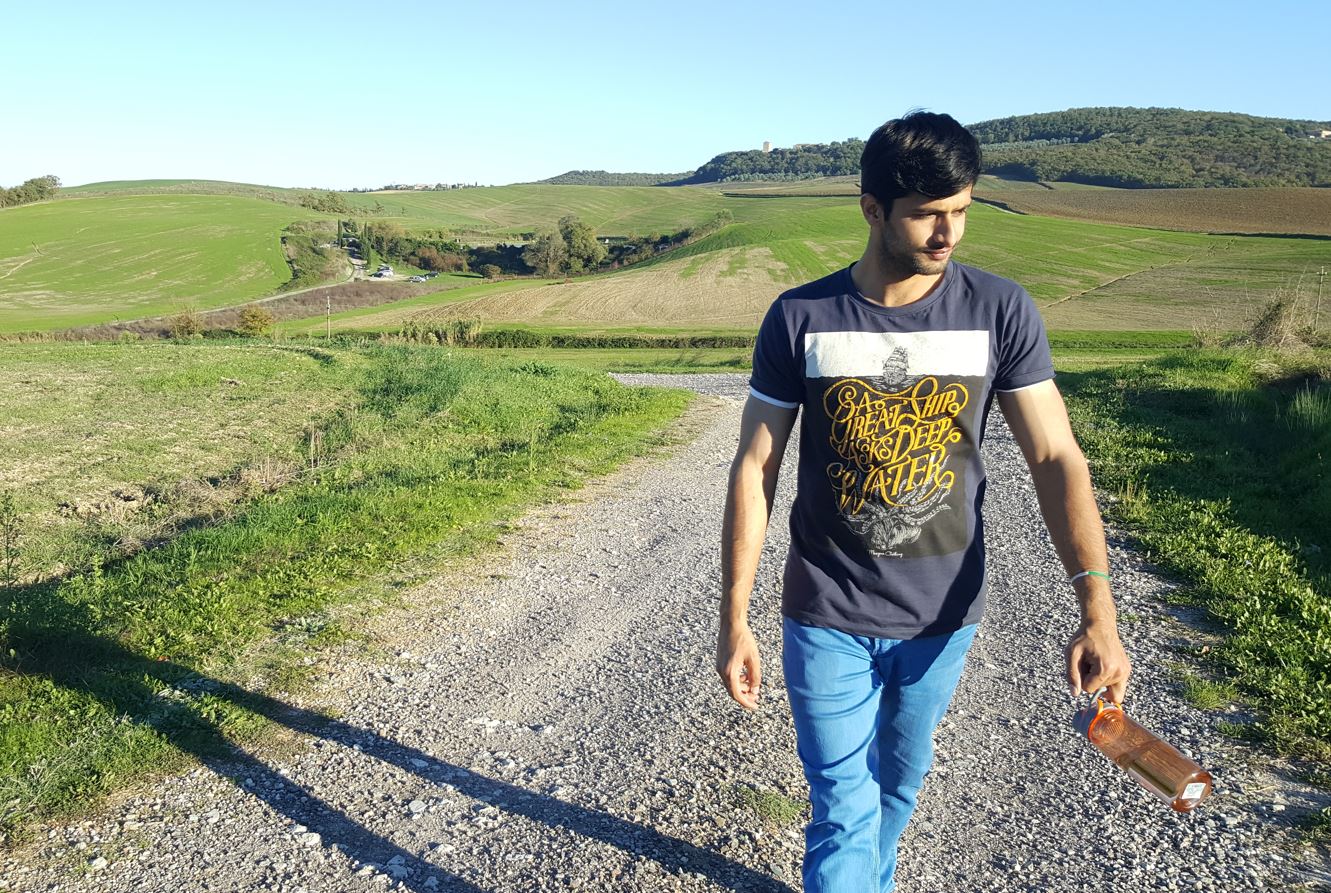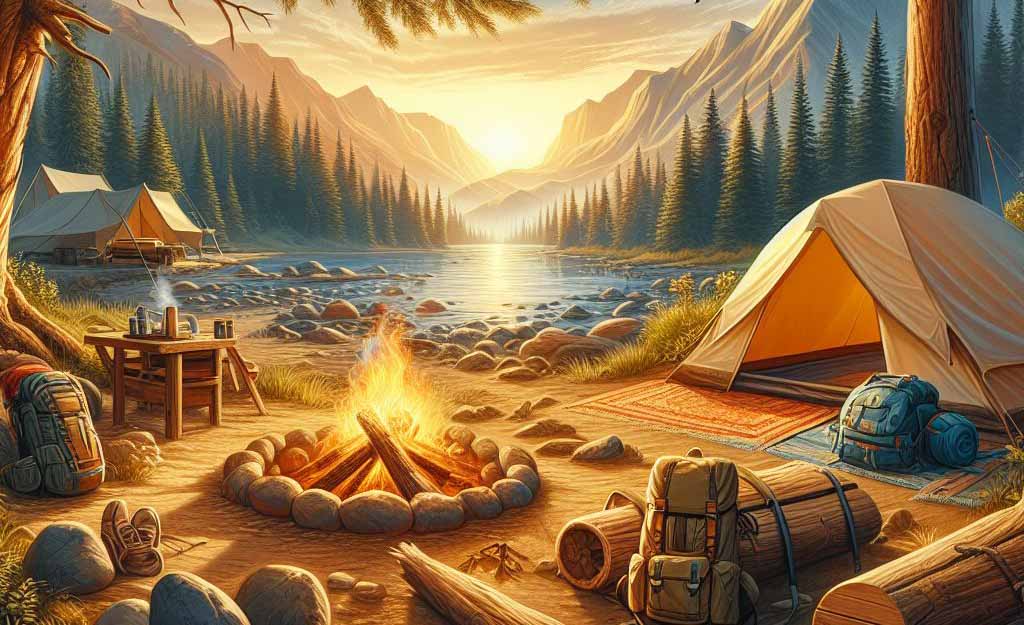The setting sun paints the sky with hues of orange and purple as you find the perfect spot to set up camp. The crackling sound of a campfire, the gentle rustle of leaves in the wind – these are the moments outdoor enthusiasts cherish.
However, the key to a memorable outdoor experience lies in the thoughtful and strategic setup of your campsite.
In this guide, we explore the nuances of campsite setup, offering insights and tips to transform your temporary home in the wilderness into a haven of comfort.
How to Setup A Campsite in Outdoors
Follow the guidelines below:
Site Selection
The foundation of any exceptional campsite rests upon location, location, location. Choosing the right spot isn’t just about aesthetics; it’s about ensuring safety, and comfort, and minimizing your impact on the environment. Let’s delve into the key considerations:
Terrain:
Seek flat, well-drained ground to avoid nocturnal roll-offs and unwanted puddles. Steer clear of areas directly under dead branches or precariously leaning trees, and remember, slopes are best enjoyed from afar.
Opt for gentle inclines towards water sources for stunning sunrises and unobstructed views.
Shelter:
Mother Nature can be a fickle friend, so seek some natural protection from wind and sun. Look for campsites nestled amidst towering trees or rock formations, but maintain a safe distance from potential hazards.
Open meadows offer breathtaking vistas but be prepared for increased exposure to the elements. Remember, sometimes, the best views come with a price tag of windchill and sunburns.
Proximity:
Striking a balance between convenience and seclusion is key. Consider your proximity to essential amenities like water sources (maintain a safe distance to avoid contaminating the supply), restrooms, and designated cooking areas.
Carrying water long distances gets old fast, and nobody enjoys an impromptu nature hike to the nearest restroom in the middle of the night.
Leave No Trace:
Tread lightly and respect the environment by choosing previously used campsites if possible. Minimize your impact by adhering to “Leave No Trace” principles, which include packing out all trash, using designated fire rings, and respecting wildlife.
Remember, you’re a guest in nature’s home, so treat it with the utmost respect.
Pitching Your Camp
With your location chosen, it’s time to set up your shelter. Whether you’re a tent aficionado, a van lifer with wanderlust, or a hammock devotee seeking breezy respite, the basic principles remain the same:
Read our guide on how to choose the right tent for camping
Know Your Sanctuary:
Every tent or shelter is unique. Before fumbling under the twilight sky, take the time to thoroughly understand the setup process. Read the instructions, familiarize yourself with the components, and mentally rehearse the steps to avoid frustration and wasted daylight.
Clear the Ground:
Imagine your tent as a queen demanding a smooth, comfortable surface. Remove rocks, sticks, and debris to create a level base that protects your shelter and ensures a restful night’s sleep. Remember, comfort starts from the ground up.
Stake it Down:
A flimsy, windblown tent isn’t exactly conducive to relaxation. Secure your shelter with sturdy stakes and guylines, factoring in potential wind and rain. Imagine each stake as an anchor tethering you to the earth, providing stability and peace of mind.
Organize Your Space:
Chaos breeds stress, even in the wilderness. Designate areas for sleeping, cooking, dining, and gear storage to create a functional and clutter-free living space. Imagine your campsite as a miniature village, with dedicated zones for each crucial activity.
Beyond the Basics
Once the essential needs are met, it’s time to personalize your campsite and make it feel like your own sanctuary in the wild. Let’s unleash your inner campsite artist:
Light Up the Night:
String battery-powered fairy lights or lanterns for ambience and nighttime visibility. Headlamps are essential for hands-free exploration, but string lights add a touch of whimsy and transform your campsite into a twinkling haven.
Create a Social Hub:
Unfold camp chairs, gather fallen logs, or utilize hammocks to create a dedicated space for relaxing and socializing. Imagine laughter and stories shared around a crackling fire, forging memories that will last a lifetime.
A Culinary Corner:
Designate a dedicated cooking area away from your tent for safety and practicality. Utilize a camp stove, a fire pit (with proper permits and regulations), or even a simple rocket stove to whip up culinary delights under the stars. Remember, good food nourishes both the body and the soul.
Storage Solutions:
Keep gear off the ground and easily accessible with mesh organizers, crates, or shelves. Imagine waking up to a tidy campsite, ready for a day of adventure without the frantic
Leave No Trace
As your outdoor adventure comes to an end, ensure that your departure leaves no trace. Respect nature, pack out all waste, and dismantle your campsite with the same care you took in setting it up. Leave the wilderness as untouched as possible for the enjoyment of future generations.
Conclusion
Campsite setup is an art that blends practicality with an appreciation for nature’s beauty. As you immerse yourself in the great outdoors, let your campsite be a testament to your respect for the environment and your commitment to creating lasting memories in the heart of nature’s embrace

Hi, I’m Masab Jamal, the founder and head editor of this blog. I love to spend most of my time in the wilderness. Apart from camping and outdoor life, I’m a full time blogger.


Your writing style is so engaging and makes even the most mundane topics interesting to read Keep up the fantastic work